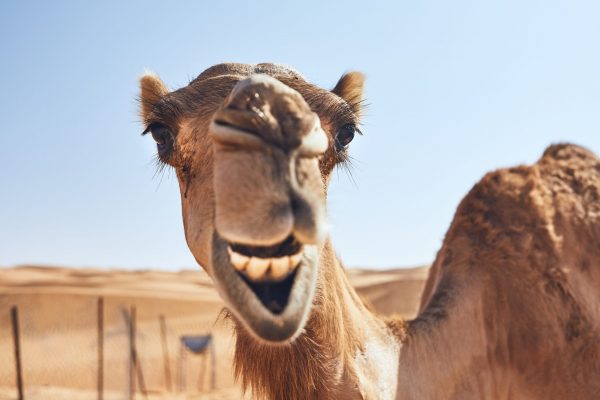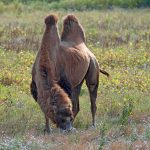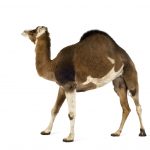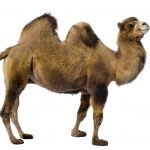Spitting is an unusual behavior for animals, and the camel is no exception. But can camels really spit? While it may seem like a strange concept, the answer is yes – camels do spit. But why? What are the circumstances that cause them to do so? And what kind of things might they be spitting out? In this article, we’ll explore these questions and more as we take a closer look at the fascinating behavior of spitting camels.
Although spitting may seem like an odd thing for a camel to do, there are actually several good reasons why they might choose to do it. Camels have been known to spit when they feel threatened or in pain. They may also spit as a way of showing their dominance or defending their territory.
Additionally, they sometimes spit out food or water if it doesn’t taste good or if they’re feeling full. All of these behaviors can help us better understand why camels spit and what might motivate them to do so.
Camel spitting causes the cheeks to swell and the animal also spits up saliva along with the contents of its stomach. It is intended to confuse, divert, or otherwise annoy the person or thing that is causing the camel distress.
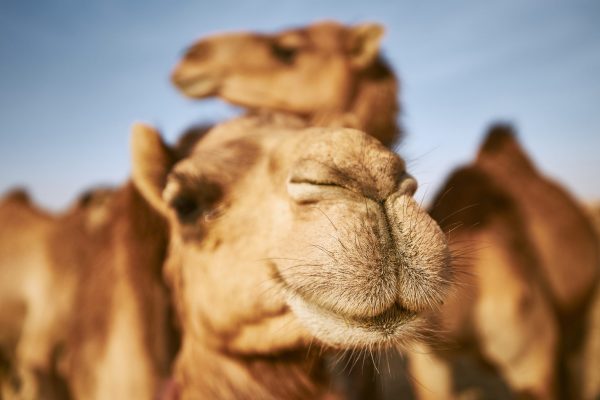
Do Camels Spit at Humans?
Camels are incredibly calm animals that hardly display violent or aggressive intentions. But occasionally, when these communal animals sense that they are in danger or attacked, camels will vomit the food, saliva, water, and bile that is stored in their stomachs, and then shower their attacker’s body with that unpleasant material.
Camels, like cows, are animals that ruminate their food, which means that they are able to return their food from the stomach so that they may chew on it again.
This process ensures that the food is thoroughly digested by them. Sometimes, if they have just consumed a lot of food or water, the food will come back up and drench their opponent, or whatever person or animal makes them feel like they are in danger. This might happen if they have recently had a lot of food or water.
What is the distance a camel can spit? (How Far)
The distance that a camel can spit depends on the size and health of the camel, as well as the consistency of the saliva. Generally, camels can spit up to 3 meters (10 feet). However, some sources suggest distances of up to 6 meters (20 feet) for a single spit!
What does Camel Spit out their mouth?
The dulla is the name of the organ that looks like a pink sac that camels spit out of their mouths. It is a sac that may expand that is located in the bottom region of the soft palate, and it is most commonly found in adult male camels.
A palatine diverticulum, also known as a dulla, looks like a large pink balloon that hangs on the side of a camel’s mouth and can grow to be up to ten inches (25 cm) in length.
Although both females and males have a dulla, the dulla of an adult male is significantly more developed than the dulla of an adult female. The dulla is a feature that is exclusive to dromedary camels.
There is no other mammal that possesses this trait, not even their near cousins, the South American llamas, nor the Bactrian camels. In order for a camel to inflate its dulla, it will first seal its nostrils and then force air from its lungs into its oral pharynx, which will cause its soft palate to expand.
Around the third month of a camel’s embryonic development, the dulla will begin to take shape. For reasons that scientists have not yet been able to explain, a dulla will almost always hang on the right side of the camel’s face.
What is Camel Spit Made of?
Camels’ spit is made of food, saliva, water, and bile that is stored in their stomachs. It comprises the camel’s saliva, digestive secretions such as different acids and bile, water, and possibly food that have been partially digested. The saliva is referred to as “cud”, and its color of it will be determined by the diet that the animal has been following.
Why does Camel Spit?
- For Attracting Females:
Sometimes a pink “ball of flesh” would emerge from the lips of the camel at random intervals. There is a widespread misconception that this is the camel’s stomach or tongue; some people even assume it is a malignancy. In point of fact, it is none of these things. Some camels have a completely unique organ; however, only male dromedaries can spit it out. This is the camel’s secret weapon for attracting potential mates, similar to the way a male peacock spreads its tail feathers to entice potential mates.
- When Threatened:
They will also spit when they feel threatened. Despite the fact that it looks more like feeling nauseous than coughing, camels learn this action by witnessing other camels perform it.
Camels’ cheeks swell up when they spit, and they also vomit up saliva along with the contents of their stomachs. The goal is to surprise, distract, or aggravate the person or thing that is causing the camel’s unrest.
What Does Camel Spit Smell Like?
The dense liquid is produced by any camel, whether it is a Bactrian camel or a dromedary camel when the camel vomits or spits. It comprises the camel’s saliva, digestive secretions such as different acids and bile, water, and possibly food that has been partially digested.
The saliva is referred to as “cud“, and its color of it will be determined by the diet that the animal has been following. The majority of these liquids, such as bile, have a very repulsive odor, which is most easily detected in the camel’s saliva or in the camel’s vomit. Aside from that, the smell of the vomit is quite repulsive.
How to know if a Camel is going to Spit?
Both the lower and upper lips of a camel’s mouth are able to move independently of one another while the camel is eating its meal because the mouth of a camel is made up of two sets of lips. Camels possess 2 sets of flat teeth, which allow them to nibble through grass and break off any thorny plants or stiff brambles.
It is possible to see that the cheeks and lips of a camel are swollen just before the camel projects the contents of its stomach toward a person as it is going to spit. This is because the camel must exert a certain amount of power in order to get its food or water to its mouth, which causes its mouth to expand in a certain manner.
Are the Camel Spit is Dangerous?
No, it is not dangerous. Camels spit, which is similar to vomit, and it is a combination of their saliva and the contents of their stomachs. They will spit in response to being threatened, and the swelling in their cheeks is a clear signal that they are going to do so. Camels, similar to cows, regurgitate their food, which contributes to the pungent odor of their breath. Despite a common myth, being exposed to camel spit will not cause you to go blind or burn. It is not in any way harmful, but rather something that can only be described as an unpleasant experience. It’s possible that an aggressive camel is biting, kicking, and trampling on people.
Why does Camel Spit on other Camels?
In arid and desert areas, camels congregate in herds that can number up to thirty individuals and are dominated by a single male. These herds are made up of moms and their young ones. When the mating season gets around, powerful males may attack other males by biting, spitting, and stomping on them in order to protect their harems of females.
How to know if a camel is going to spit?
If you’re around a camel, it’s important to be able to recognize the signs that it’s about to spit. First, you should look for physical cues. A camel might lower its head, start making noises or become agitated. It might also start chewing its cud quickly, a sign that something is wrong and the contents of its stomach are upset.
Additionally, if you can get close enough to smell the camel’s breath, you may be able to detect an acidic odor similar to vomit which indicates a camel is about to spit. If any of these signs are present, it’s best to stay away from the camel so as not to get caught in the line of fire.
How do I wash camel spit off of me?
If you’ve ever been unlucky enough to be on the receiving end of a camel’s spit, you know that it can feel like a daunting task to get it off of yourself. The best way to do this is to immediately use fresh water and soap or shampoo. If you don’t have access to those items, try scraping the spit off with something like a stick or cloth.
Make sure whatever material you use is clean and not scratchy so as not to aggravate your skin further. You should also consider changing into clean clothes after washing off the camel spit, as camels store water in their humps and may have bacteria in their saliva. To avoid this situation in the future, make sure to stay out of reach of a camel’s mouth when they are eating or drinking!
What Are Some Surprising Behaviors of Flying Squirrels?
Scientists recently made an exciting breakthrough in their study of flying squirrels. An amazing flying squirrel behavior discovered is their ability to glide effortlessly from tree to tree, spanning distances of up to 150 feet. Furthermore, these nocturnal creatures possess a unique adaptation wherein they can rotate their ankles, allowing them to maneuver mid-flight and land precisely on target. With their astounding acrobatics, flying squirrels truly embody the marvels of the animal kingdom.
Do Camels Spit as a Defense Mechanism Against Predators?
Yes, camels can outrun horses over long distances due to their energy-efficient stride. As for their defense mechanism, camels do indeed spit as a form of defense. This is often seen when they feel threatened or when they need to establish dominance within their group.
Do Camels Spit Out Their Heart Or Brain?
Camels are known for their ability to store water and energy in their humps, however, they are also well-known for their spitting. Despite what you may have heard, camels do not spit out either their heart or brain! Camels can spit at other camels, humans, and animals as a defense mechanism when they feel threatened.
A camel’s spit is actually a combination of saliva and stomach acid that the camel will expel from its mouth in an attempt to ward off those it deems threatening. While camel spit does not contain any organs from the camel itself, it can still be very dangerous if it makes contact with someone’s eyes or mouth as the acidity of the spit can cause burning and irritation.
While camels do have the ability to spit, this behavior should always be discouraged as it is seen as aggressive and can pose health risks.

